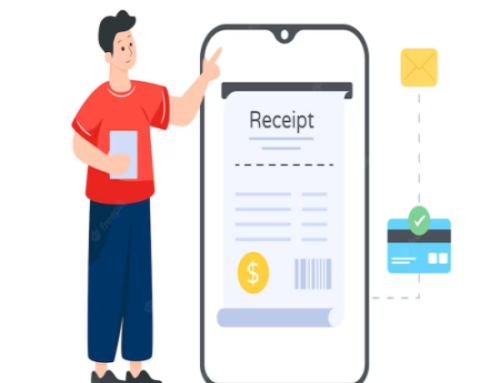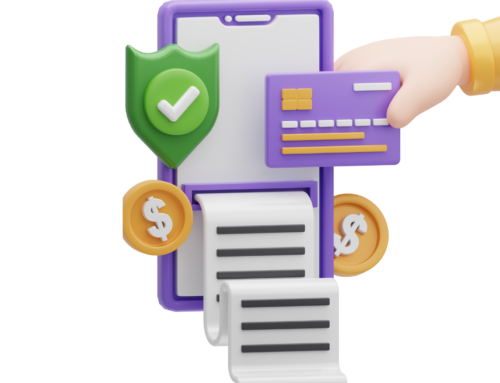This is not another article discussing the expanding consumer awareness and interest in sustainable E-receipt and the environmental impact of paper receipts. Additionally, one will not encounter discussions regarding cost savings if they discontinue the use of thermal paper and print receipts.
This article is intended for brick-and-mortar retailers and hospitality businesses, specifically. Five crucial measures for maintaining competitiveness in a dynamic business environment will be explored:
1) Gather Customer Information
E-receipt contain the same information as traditional paper receipts and therefore comply with fiscal regulations. But the smart receipt goes far beyond that by providing a variety of instruments for capturing customer data.
Assign purchase information to specific customers
As an illustration, upon consumers accessing the refive smart receipt through their mobile browser, the refive software possesses the capability to promptly distinguish between new and returning customers. The electronic receipt may subsequently feature a GDPR-compliant opt-in for incentive-based marketing, which can be integrated with your CRM software if desired.
Irrespective of the payment method utilised or the customer’s decision to withhold contact information, the refining system has already generated an anonymised customer profile that includes a precise record of purchases. Upon the customer’s subsequent visit to your establishment (or even your online store) and activation of their smart receipt, said purchase will be appended to their profile.
Gather customer attitude data directly from the electronic receipt
The intelligent electronic receipt can, in addition to collecting email addresses and purchase information, request customers to provide feedback regarding their purchasing experience or specific products purchased. A layer of attitude data is thus incorporated into the consumer profile.
Lastly, interaction with the physical receipt is also monitored. This customer profile is also updated with information regarding whether the customer clicked on a promotional offer printed on the receipt or acquiesced to a request to provide an online review.
2) Acquire customer insights to improve marketing and decision-making
Once a substantial portion of your in-store clientele is ultimately represented by actual customer data, this information can be analysed to generate actionable customer insights. Determine, for instance, which products are most well-liked by particular consumer segments in order to optimise pricing and stocking strategies. Alternatively, apply the knowledge you have gained regarding the value potential of each consumer to determine when and what to offer them in the future.
This is unattainable using paper receipts, which contain only aggregate information regarding customers and purchases.
Make use of AI analytics
The receptive smart receipt provides analytics powered by artificial intelligence, enabling marketers to access consumer insights in a format that does not necessitate the use of additional software or data analysts.
3) Develop fresh avenues for consumer interaction both within the store and after the sale
By substituting the intelligent electronic receipt for the paper receipt, one can successfully implement a novel digital consumer touchpoint. Customers will be granted the chance to interact with your brand through the smart receipt application on their mobile device, either in-store or after the sale. This method of interaction is user-friendly, as it does not necessitate the installation of any applications, the disclosure of personal information, or the completion of lengthy forms.
4) Enhance consumer retention through convenient loyalty programmes and personalised marketing
An effective approach to consumer retention requires the capacity to distinguish between new and returning clients. Additionally, it is critical to monitor customer lifetime value and attrition rate in order to assess the efficacy of your endeavours and campaigns. The e-receipt enhancement provided by refive enables you to accomplish this.
Tailored in-store promotions
Individualization has been one of the most significant marketing trends. Although ecommerce marketers possess the capability to implement the requisite tools for effective personalization, traditional retailers frequently encounter challenges when attempting to individualise the in-store experience, particularly when operating on a large scale.
A substantial transformation occurs when paper receipts are substituted for intelligent digital ones. Retailers that leverage refive’s system to establish connections between customers and their purchase histories are capable of interacting with customers through personalised product recommendations and exclusive promotions; this ultimately results in increased conversion rates.
Streamlined enrollment for loyalty
Retaining customers is frequently accomplished via the implementation of loyalty programmes. In addition to devising strategies for rewards and functions, the task at hand encompasses the enrollment of consumers into the loyalty programme and facilitating their self-identification as members.
Intelligent receipts have the potential to address both of these concerns. A lengthy enrollment form for the loyalty programme can be converted to a single click on the smart receipt. Automatic customer identification eliminates the need for patrons to hold a loyalty card, launch an app, or perform any action beyond accessing the smart receipt.
5) Increase expenditures on marketing
Conversions that customers make in your physical location after viewing an online advertisement can be challenging to monitor and record. Consequently, the optimal performance of each of your online campaigns remains unknown to you. Customer data acquisition is essential for effective remarketing to existing customers.
You can monitor the precise conversion value and have the digital receipt automatically generate a conversion event in your online advertising platform (Meta, Google, or another) when you open it with refive. Additionally, it is possible to generate remarketing audiences from in-store patrons and sustain their interest and engagement through online advertisements.
Read More: The Importance of Maintaining a Record of Your Digital Receipts
Stay Connected!







